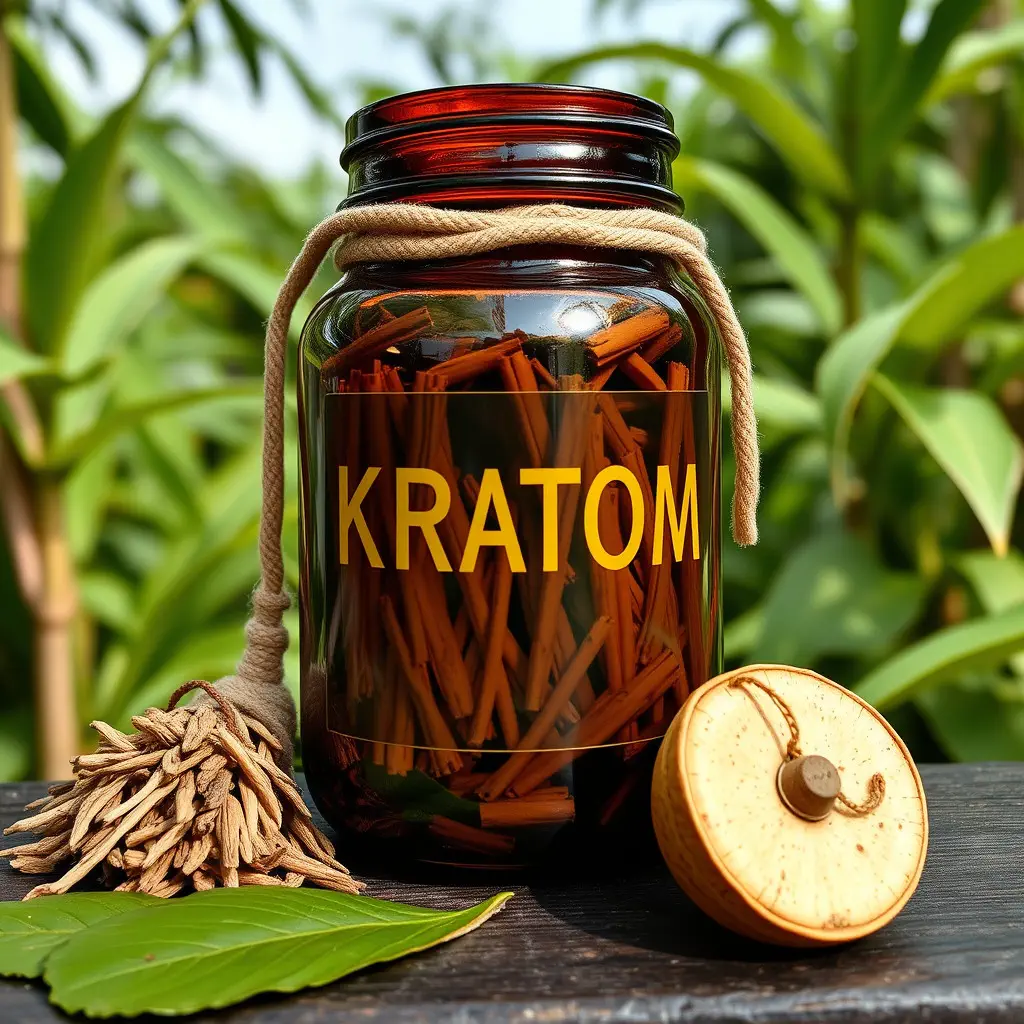Kratom, derived from the Mitragyna speciosa tree, has been studied for its potential anti-inflammatory effects due to compounds like mitragynine and 7-hydroxymitragynine. These alkaloids interact with opioid receptors and could influence pain and inflammation. To use kratom safely for inflammation reduction, it's crucial to start with a low dose, monitor individual sensitivity, and adjust as necessary, always while adhering to safety guidelines and consulting healthcare professionals due to its potency and potential interactions. Research suggests kratom may modulate inflammation by inhibiting NF-κB signaling pathways, but the FDA has raised safety concerns, emphasizing the need for scientific evaluation of its efficacy and safety. Safe use involves verifying product quality, avoiding substance combinations that could lead to adverse effects or overdose, and regularly consulting healthcare providers. This approach ensures responsible exploration of kratom's anti-inflammatory properties while minimizing risks, making it essential for individuals to understand how to use kratom safely within a wellness regimen.
Exploring the therapeutic potential of kratom as a natural anti-inflammatory agent, this article delves into its role in reducing inflammation. Uncover the science that underscores kratom’s anti-inflammatory properties and learn how to incorporate it safely into your wellness routine with our comprehensive guidelines on safe kratom usage. Gain insights into optimizing your health naturally through this potent supplement, with a focus on understanding its effects and responsible consumption.
- Understanding Kratom and Its Role in Inflammation Reduction
- The Science Behind Kratom's Anti-Inflammatory Properties
- Safe Usage Guidelines for Kratom as an Anti-Inflammatory Supplement
Understanding Kratom and Its Role in Inflammation Reduction

Kratom, a tropical deciduous tree native to Southeast Asia, has garnered attention for its potential role in inflammation reduction. The active compounds found in kratom leaves, primarily mitragynine and 7-hydroxymitragynine, are believed to interact with the body’s opioid receptors, which can influence pain perception and inflammatory responses. Understanding how to use kratom safely is paramount when considering its application for inflammation reduction. Proper dosing is critical, as the effects of kratom can be quite potent; users should start with a low dose to gauge individual sensitivity and gradually adjust the dosage as needed. Additionally, it’s important to adhere to recommended guidelines and consult healthcare professionals before integrating kratom into one’s health regimen, especially given its potential for interaction with other substances and medications.
Research suggests that kratom may modulate immune system pathways associated with inflammation. For instance, certain studies have indicated that kratom could potentially inhibit nuclear factor kappa-B (NF-κB) signaling, a key mechanism in the body’s inflammatory response. This action, if confirmed by further research, could explain its use in traditional medicine for reducing inflammation. However, it’s crucial to approach these findings with caution and to understand that while kratom may offer benefits, it is not without risks or regulatory oversight. The U.S. Food and Drug Administration (FDA) has issued warnings about the safety of kratom, highlighting the need for rigorous scientific investigation into its efficacy and safety profile for inflammation and other conditions.
The Science Behind Kratom's Anti-Inflammatory Properties

α‐Ketoglutaric acid (α‐KG) and alkaloids found in kratom, such as mitragynine and 7‐hydroxymitragynine, have been studied for their potential anti-inflammatory effects. These compounds are believed to modulate the activity of key signaling molecules that play a role in regulating the body’s inflammatory response. Research suggests that kratom alkaloids may interact with certain receptors and enzymes, such as the opioid receptors, transient receptor potential vanilloid 1 (TRPV1), and nuclear factor kappa-light-chain-enhancer of activated B cells (NF-κB), to reduce inflammation. This interaction can lead to a decrease in pro‐inflammatory cytokines, which are proteins involved in cell signaling that can cause tissue damage and pain when overproduced.
When considering the use of kratom for anti-inflammatory purposes, it is crucial to approach it with caution. The safe use of kratom requires careful dosing, as excessive intake can lead to adverse effects. It is advisable to start with a low dose and consult with a healthcare provider before integrating kratom into one’s health regimen. Additionally, users should be aware of the legal status of kratom in their jurisdiction, as it is subject to various regulations that may affect its availability. Adhering to recommended dosages and avoiding combinations with other substances can mitigate potential risks. Users should also consider the quality and purity of the kratom product, as these factors significantly influence its efficacy and safety. Engaging in regular monitoring for any adverse reactions and maintaining open communication with healthcare providers will further support safe kratom use.
Safe Usage Guidelines for Kratom as an Anti-Inflammatory Supplement

When incorporating kratom as an anti-inflammatory supplement into one’s wellness routine, adherence to safe usage guidelines is paramount. Kratom, derived from the leaves of Mitragyna speciosa, interacts with the body’s opioid receptors and has been traditionally used for its potential anti-inflammatory properties. To harness these benefits safely, it is crucial to understand proper dosing. Generally, starting with a lower dose and gradually increasing it can help minimize the risk of adverse effects. For instance, a typical range for adults might be between 2 to 6 grams of kratom powder, depending on individual tolerance and the specific strain used. It’s also important to consider the mode of ingestion; kratom can be consumed in capsule form or as a tea, but the effects can vary based on the preparation method.
Safety also entails sourcing high-quality, pure kratom products from reputable vendors to avoid contaminants that could exacerbate health issues. Regular users should be mindful of their frequency of use; kratom should not be consumed daily as it can lead to tolerance and dependence. Additionally, combining kratom with other substances, particularly those with sedative properties like alcohol or prescription opioids, is highly discouraged due to the increased risk of overdose and adverse interactions. By following these safe usage guidelines, individuals can explore the potential anti-inflammatory benefits of kratom while mitigating risks associated with its use. Always consult with a healthcare provider before integrating kratom into your health regimen, especially if you have pre-existing health conditions or are taking other medications.
Incorporating kratom supplements into one’s health regimen can be a promising strategy for reducing inflammation, as detailed in this article. The anti-inflammatory potential of kratom, backed by scientific research, suggests its role as a natural alternative for those seeking relief. To harness these benefits safely, adherence to usage guidelines is paramount. By understanding the intricacies of how kratom interacts with the body and implementing responsible consumption practices, individuals can explore its anti-inflammatory properties effectively. Always prioritize informed decision-making and consult healthcare professionals when integrating kratom into your health routine to ensure optimal well-being and safety.






